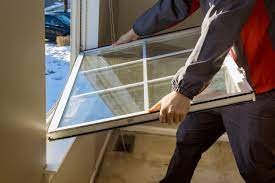Introduction
Embarking on basic electrical repairs at home can be both empowering and cost-effective. This guide aims to provide homeowners with essential knowledge for tackling minor electrical issues. While these repairs are accessible, it’s crucial to prioritize safety and follow recommended precautions.
Safety First
Turning Off Power and Using PPE
Before diving into any electrical repair, always turn off the power at the circuit breaker to ensure a safe working environment. Additionally, wearing personal protective equipment (PPE) such as insulated gloves and safety glasses is essential to minimize risks.
Changing a Light Bulb
Properly Turning Off the Light Switch
Begin by turning off the light switch associated with the bulb you intend to change. This simple step ensures there is no power running to the fixture.
Safely Replacing a Light Bulb
- Wait for the Bulb to Cool: Allow the existing bulb to cool before attempting removal.
- Unscrew the Old Bulb: Gently twist the old bulb counterclockwise to remove it.
- Insert the New Bulb: Screw in the new bulb clockwise until snug.
- Turn On the Light Switch: Restore power by turning on the light switch.
Replacing an Electrical Outlet
Turning Off Power at the Circuit Breaker
- Identify the Correct Circuit Breaker: Locate and turn off the breaker corresponding to the outlet.
- Use a Voltage Tester: Confirm that there is no power reaching the outlet using a voltage tester.
Step-by-Step Outlet Replacement Process
- Remove the Faceplate: Unscrew and remove the faceplate.
- Unscrew the Outlet: Loosen the screws holding the outlet in place.
- Disconnect Wires: Carefully disconnect the wires from the old outlet.
- Connect Wires to the New Outlet: Attach wires to the corresponding terminals on the new outlet.
- Screw in the New Outlet: Secure the new outlet in place with the provided screws.
- Attach Faceplate: Screw the faceplate back onto the new outlet.
Fixing a Tripped Circuit Breaker
Identifying and Resetting a Tripped Breaker
- Open the Circuit Breaker Panel: Locate the circuit breaker panel in your home.
- Identify the Tripped Breaker: Look for the breaker switch in the “off” position or not fully in the “on” position.
Resetting the Circuit Breaker Safely
- Turn Off Electronic Devices: Before resetting, turn off electronic devices connected to the affected circuit.
- Push the Breaker to the “Off” Position: Firmly push the breaker to the “off” position.
- Reset to the “On” Position: Move the breaker to the “on” position.
- Turn On Electronic Devices: Gradually turn on electronic devices to avoid overloading the circuit.
Replacing a Switch
Turning Off Power at the Circuit Breaker
- Locate the Appropriate Circuit Breaker: Identify and turn off the breaker corresponding to the switch.
- Verify Power Absence: Use a voltage tester to ensure there is no power reaching the switch.
Removing and Replacing a Light Switch
- Remove the Faceplate: Unscrew and remove the faceplate covering the switch.
- Unscrew the Switch: Loosen the screws holding the switch in place.
- Disconnect Wires: Carefully disconnect the wires from the old switch.
- Connect Wires to the New Switch: Attach wires to the corresponding terminals on the new switch.
- Secure the New Switch: Screw the new switch in place with the provided screws.
- Reattach the Faceplate: Screw the faceplate back onto the new switch.
Dealing with a Broken Light Switch
Assessing the Issue and Repair Options
- Examine the Switch: Look for visible damage, cracks, or loose components.
- Functional Testing: Determine if the switch still operates despite the visible damage.
Repairing or Replacing a Broken Light Switch
- For Minor Issues: Attempt to tighten loose parts or reposition components for minor repairs.
- If Beyond Repair: Replace the broken switch following the steps outlined earlier.
Repairing a Frayed Cord
Identifying and Safely Repairing Damaged Cords
- Visual Inspection: Examine cords for visible damage, cuts, or exposed wires.
- Use of a Multimeter: Check for continuity in the cord using a multimeter.
Safely Repairing or Replacing Damaged Cords
- Cutting and Stripping: If the damage is minimal, cut the frayed portion and strip the wires.
- Employing Heat Shrink Tubing: Slide heat shrink tubing over the stripped portion and heat it to provide insulation.
- Replacing the Plug: For extensive damage, cut and strip the cord, then attach a new plug.
Installing a Ceiling Fan
Ensuring Proper Support and Step-by-Step Installation
- Locate a Ceiling Joist: Use a stud finder to find a ceiling joist for adequate support.
- Install a Fan Brace if Needed: If necessary, install a fan brace between joists to provide additional support.
Step-by-Step Ceiling Fan Installation Process
- Turn Off Power: Ensure the power to the ceiling fan location is switched off.
- Mount the Ceiling Bracket: Secure the ceiling bracket to the electrical box.
- Connect Wires: Attach fan wires to corresponding house wires using wire nuts.
- Attach Fan Blades: Follow the manufacturer’s instructions to attach fan blades.
- Secure the Fan Blades: Fasten the fan blades securely as per manufacturer guidelines.
- Attach Light Kit if Applicable: If your fan has a light kit, follow instructions to attach it securely.
Conclusion
In conclusion, mastering basic electrical repairs empowers homeowners to address minor issues independently. While these repairs are accessible, safety remains paramount. Always turn off power and wear PPE. Remember, if a repair seems beyond your comfort level or expertise, seek professional assistance. Tackling basic electrical repairs not only saves money but also instills a sense of accomplishment.
FAQs
- Is it safe to change a light bulb while the switch is on?
- No, always turn off the light switch before changing a light bulb to ensure safety.
- Can I replace an electrical outlet without turning off the power?
- It is highly advised to turn off the power at the circuit breaker before replacing an electrical outlet.
- What should I do if a circuit breaker keeps tripping?
- Identify the cause of the overload, turn off electronic devices, reset the breaker, and gradually turn devices back on.
- Can I replace a light switch without any electrical knowledge?
- While it’s possible, it’s recommended to have some basic electrical knowledge and turn off power before attempting a switch replacement.
- Is it necessary to use a stud finder when installing a ceiling fan?
- Using a stud finder is essential to ensure proper support when installing a ceiling fan.





